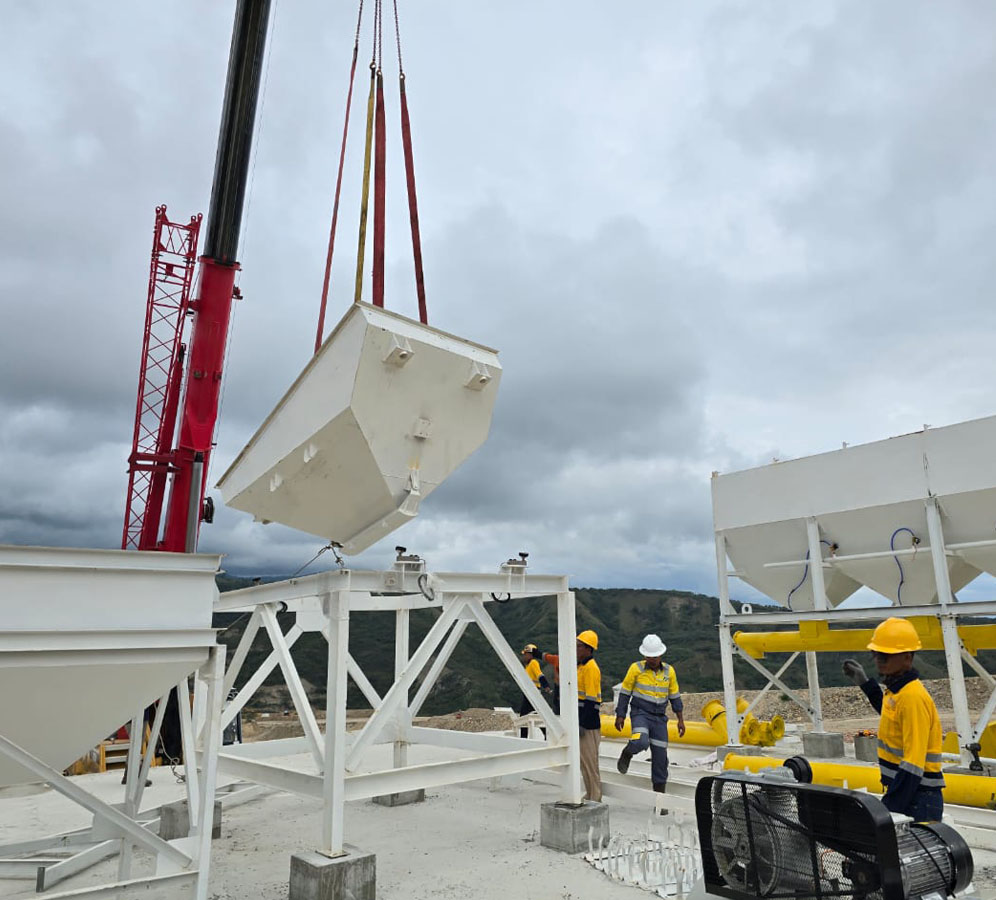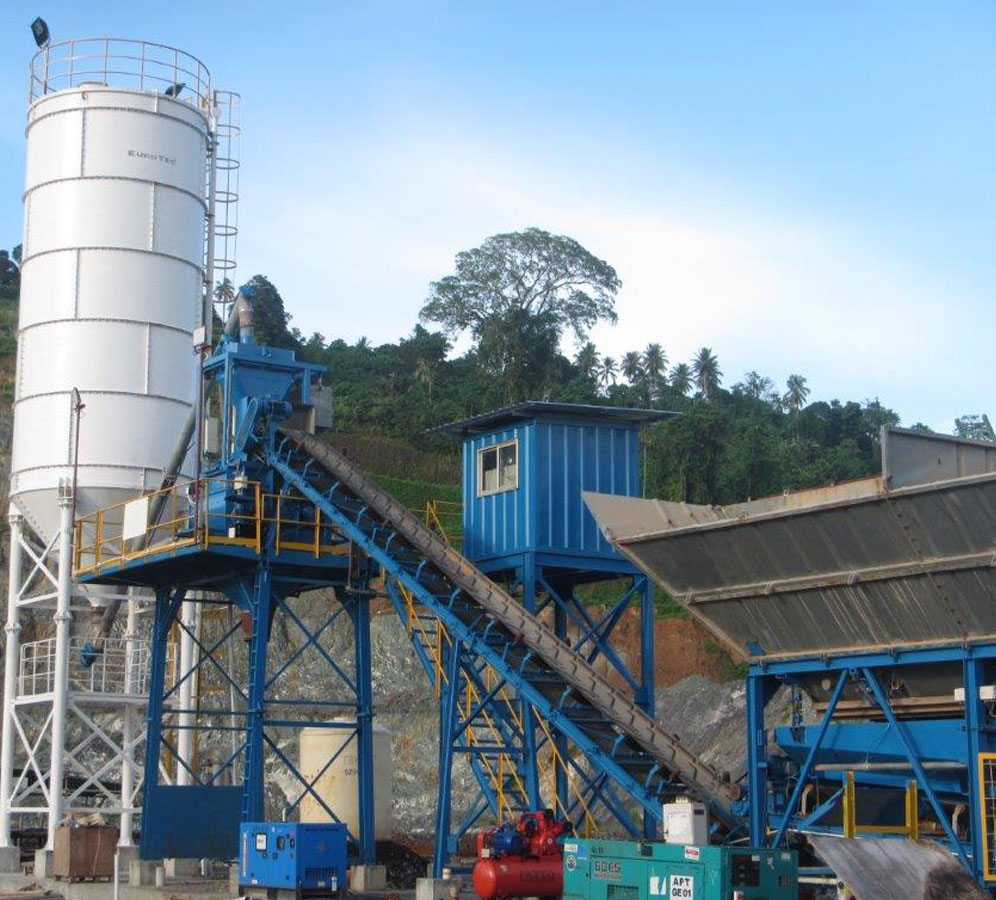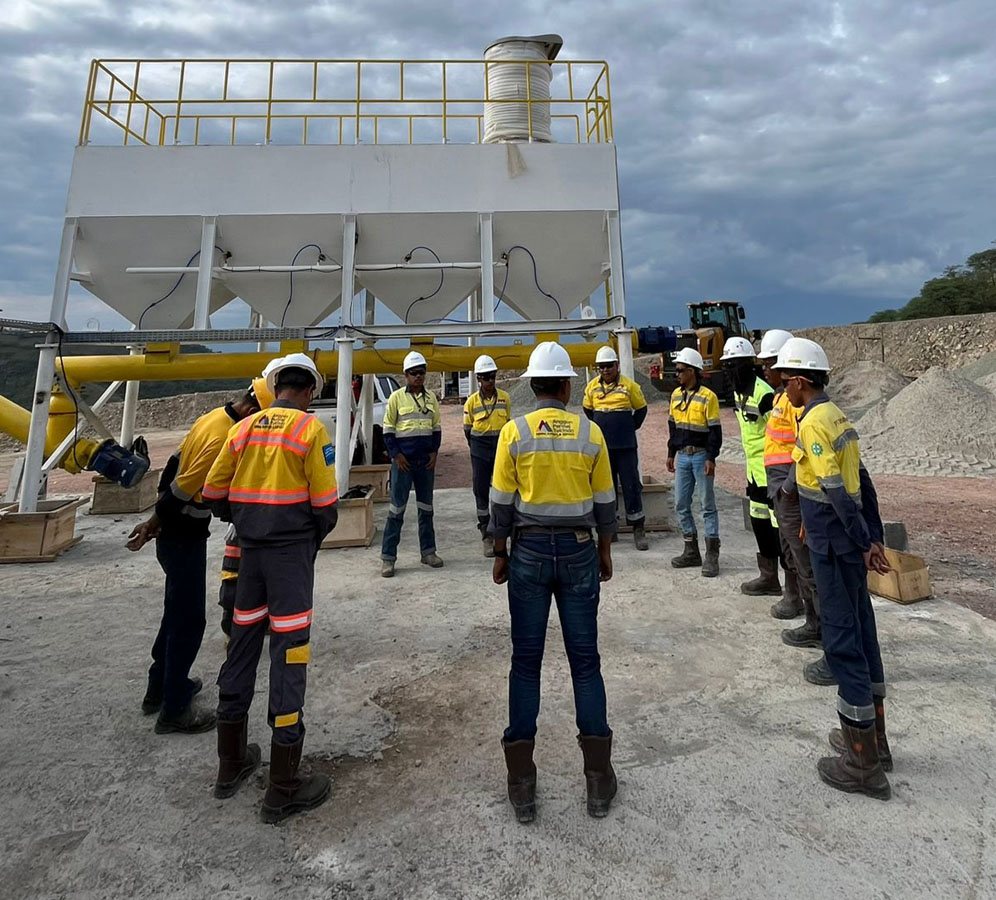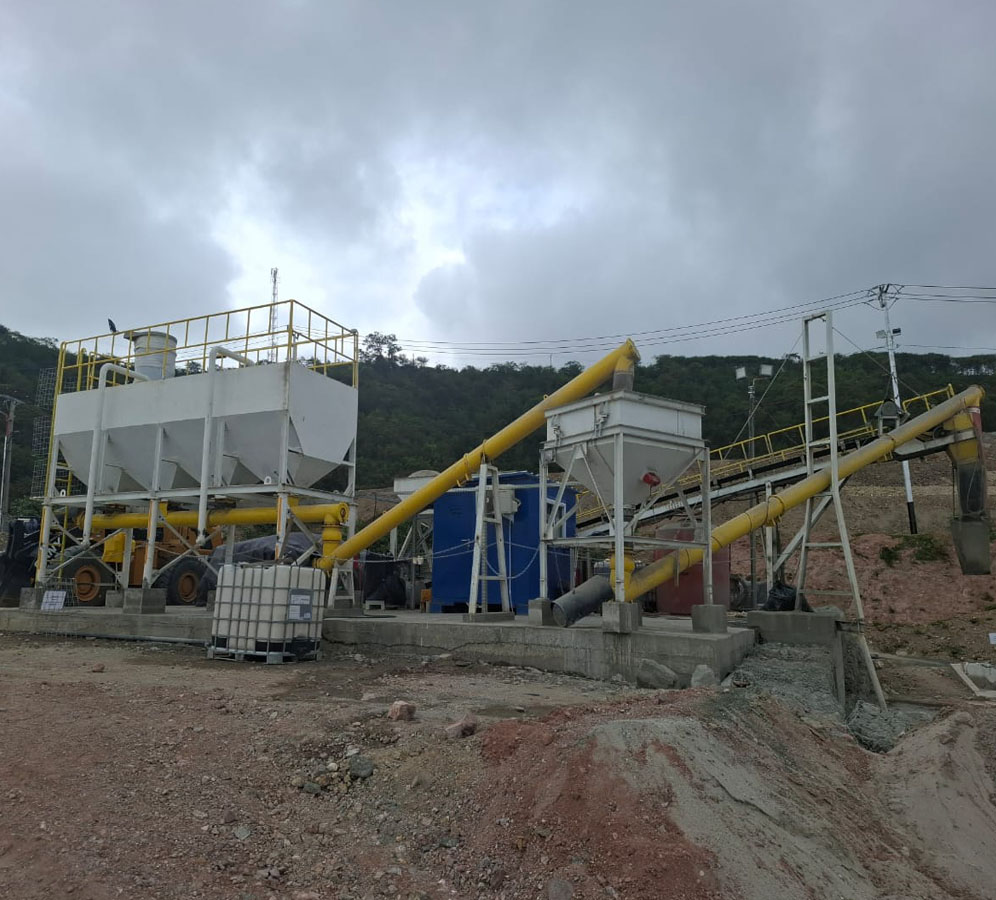Complete Guide to Mining Batching Plants: Understanding Components, Types, Operations, and Environmental Mitigation Strategies. Learn how to select and manage a batching plant to achieve optimal, safe, and efficient concrete production in mining areas.
In modern mining operations, efficiency and the quality of construction materials are key factors determining project success. One of the most crucial facilities supporting this is the batching plant an installation designed to supply concrete and other mixed materials with consistent, high-quality standards. With the ability to produce concrete mixes according to precise project specifications, batching plants not only accelerate the construction process but also ensure the durability and safety of built structures.
What Is a Batching Plant?
In simple terms, a batching plant is a system or compact facility designed to measure, mix, and produce concrete or composite materials automatically. In mining environments, this facility plays a vital role in processing large volumes of materials, maintaining consistent mix quality, and minimizing human error.
By using a batching plant, mining companies can ensure a continuous supply of construction materials that meet technical specifications, supporting smooth and efficient mine operations.
Main Components of a Mining Batching Plant

Understanding the key components of a batching plant is essential for maintaining efficient and high-quality concrete production. Each component serves a specific function, and their performance collectively determines the success of the batching process.
Material Storage System
- Cement Silo: Functions as a bulk storage unit that keeps cement dry and free from moisture, ensuring material quality. Modern silos are equipped with level sensors and pneumatic systems for automatic loading and discharge.
- Aggregate Bin / Storage Bin: Stores aggregates such as sand, gravel, and crushed stone separately by type and size. This setup allows accurate measurement before mixing, ensuring consistent concrete quality and preventing material contamination.
- Water Tank: Holds clean water for mixing with cement and aggregates. Automated control systems regulate water volume according to predetermined mix ratios to maintain concrete consistency.
Transportation and Weighing Systems
- Conveyor Belt: Transfers aggregates from storage bins to the mixer efficiently, ensuring continuous material flow. Some systems feature adjustable speeds for production flexibility.
- Weighing System: Precisely measures cement, aggregates, water, and admixtures to ensure accurate mix proportions a critical factor in maintaining concrete strength and consistency.
Mixing and Control Systems
- Mixer: The heart of the batching plant where all materials are combined into a homogeneous mix. Types include twin-shaft and planetary mixers, chosen based on capacity and project requirements.
- Admixture System (Dosage Pump): Automatically adds chemical admixtures such as accelerators or retarders to enhance workability, durability, or curing speed.
- Control System: A computerized unit that automates and monitors the entire process from material measurement to concrete discharge. Modern software enables real-time monitoring and data tracking for improved efficiency.
Types of Batching Plants and Their Applications in Mining

Batching plants vary in design and configuration to meet specific mining needs. The right type affects production efficiency, mobility, and output quality.
Based on Mobility
- Stationary Batching Plant: Fixed in one location, designed for large-scale, long-term operations. Ideal for projects requiring continuous concrete supply in high volumes.
- Mobile Batching Plant: Designed for easy relocation across sites. Though smaller in capacity, it provides flexibility for shifting mining projects without compromising quality.
- Compact & Mini Batching Plant: Small-sized plants for limited spaces or low-volume production. Cost-efficient and quick to install, suitable for small mining or supplementary projects.
Based on Mixing Process
- Dry Mix Batching Plant: Materials are measured and mixed dry, with water added during transit or on-site. Energy-efficient and suitable for medium-distance concrete delivery.
- Wet Mix Batching Plant: All materials, including water, are mixed in a central mixer, producing uniform and durable concrete ideal for high-quality mining projects.
- Transit Mix Batching Plant: Similar to dry mix, where materials are loaded into mixer trucks for on-site mixing. Offers flexibility for varying project scales and remote locations.
How a Batching Plant Works: From Raw Materials to Ready-Mix Concrete
- Material Storage: Cement, aggregates, water, and admixtures are stored in silos, bins, and tanks.
- Material Weighing: Each material is accurately measured based on the concrete mix design.
- Transport to Mixer: Conveyors or other systems transfer materials to the mixer.
- Mixing Process: Materials are blended into a uniform concrete mix, with admixtures added as required.
- Control and Monitoring: The automated system ensures consistency and monitors performance in real time.
- Concrete Discharge: The finished concrete is released and transported to the project site using mixer trucks or direct pour systems.
Key Requirements for Operating a Batching Plant in Mining Areas

Operating a batching plant in mining zones requires adherence to safety, efficiency, and regulatory standards:
- Operational Permits: Ensure all environmental and mining operation permits are in place, including water usage and waste management.
- Strategic Location: The site should be safe from landslide or flood risks, close to work areas, and minimize dust and noise pollution.
- Trained Operators: Personnel must be certified and trained in safety protocols and concrete quality control.
- Material Handling: Maintain proper storage and handling procedures to prevent contamination and preserve mix accuracy.
- Support Equipment: Availability of heavy machinery, PPE, and regular maintenance systems ensures safe, smooth operations.
Meeting these standards ensures that batching plant operations remain safe, efficient, and capable of producing high-quality concrete for mining infrastructure.
Environmental Impacts and Mitigation Strategies
Mining batching plants can generate environmental impacts that must be managed properly.
Potential Impacts
- Dust Pollution: From cement, sand, and aggregate handling.
- Noise Pollution: Generated by mixers, conveyors, and heavy machinery.
- Concrete Waste: Leftover concrete may contaminate soil and water.
Mitigation Strategies
- Dust Collectors: Install filtration systems to reduce air pollution.
- Wastewater Management: Build drainage and sedimentation ponds to treat used water.
- Concrete Recycling: Reuse leftover concrete as aggregate to minimize waste and cost.
By implementing these strategies, batching plant operations can remain both efficient and environmentally responsible.
Optimizing Concrete Production in Mining Areas

Efficient, high quality concrete production in mining depends on selecting the right batching plant type and ensuring proper operational management. Routine maintenance, operator training, and material quality control are essential to maintain consistent output and minimize production disruptions.
For professional consultation, contact Aptekindo:
- Instagram: @aptekindo
- Engineering Email: engineering@aptekindo.com
- Sales Email: sales@aptekindo.com
- LinkedIn: APTEKINDO
- YouTube: @anggunpermaitekindo-APT
- TikTok: @apt.aptekindo.ams
To achieve optimal results, mining companies should conduct thorough technical analysis and operational design planning. Consulting with geotechnical experts helps evaluate site conditions, determine batching plant capacity, and develop safe, efficient production strategies.
With this approach, mining projects can run smoothly, meet quality standards, and maintain both safety and environmental sustainability.




